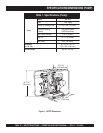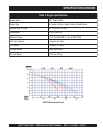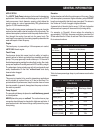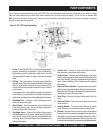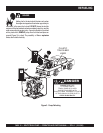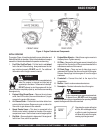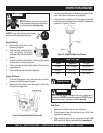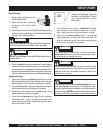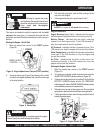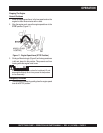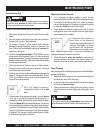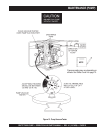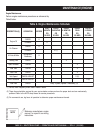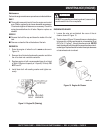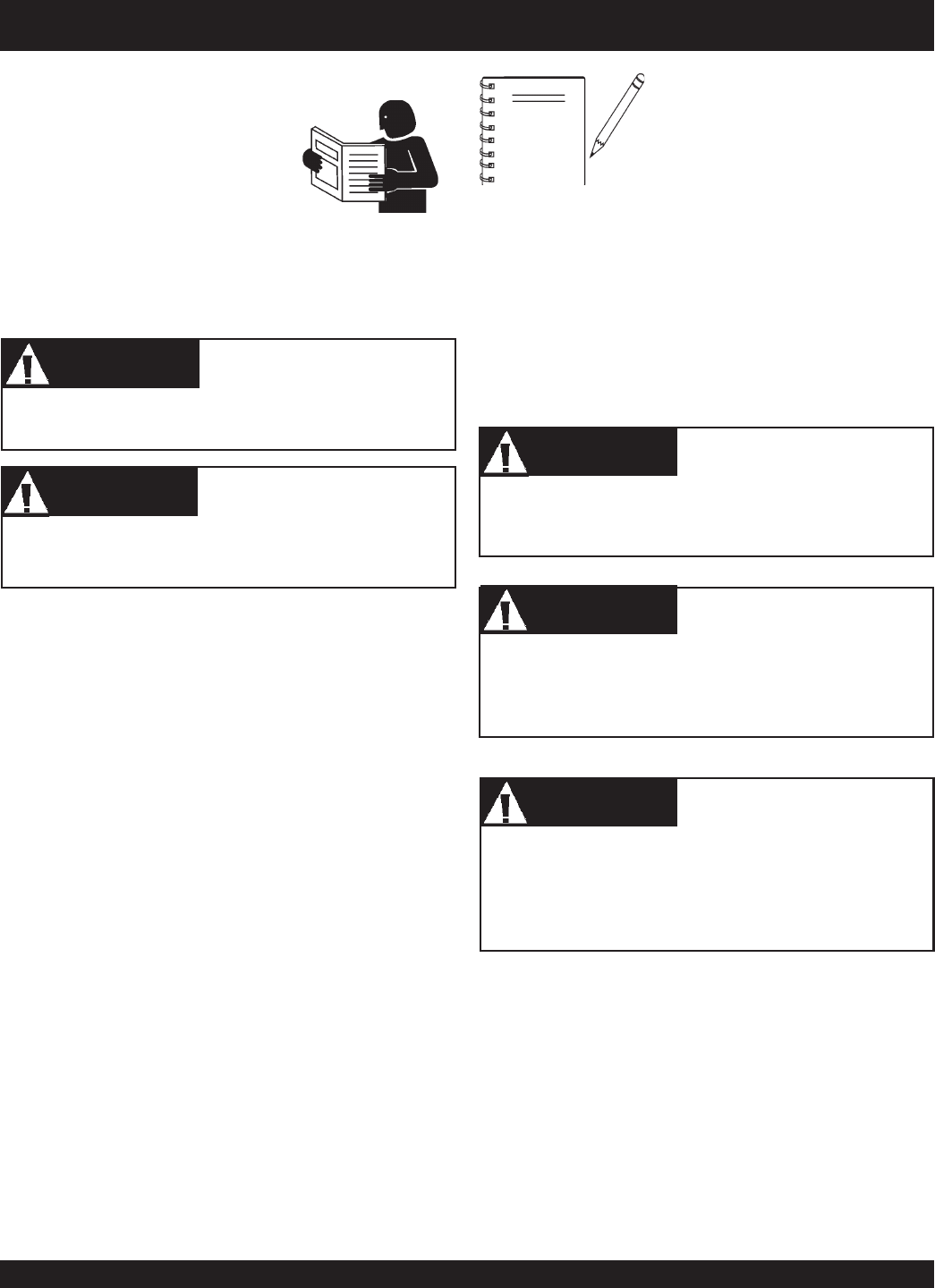
QP4TZ TRASH PUMP — OPERATION AND PARTS MANUAL — REV. #1 (10/10/08) — PAGE 19
Before Starting
1. Read safety instructions at the
beginning of manual.
2. Place pump as near to water as
possible on a firm and flat level
surface.
3. To prime pump, remove fill cap (Figure 2) and fill pump casing
with water. If the pump casing is not filled with water before
starting, it will not begin pumping.
SETUP (PUMP)
4. Check for
leaks
between pump and engine. If water is leaking
between the pump and engine housing, the seal inside the
pump may be worn or damaged. Continued operation of the
pump is not recommended. Further usage of the pump under
these conditions may cause severe water damage to engine.
Hoses and Clamps
1. Check that all hoses are
securely
attached to the pump.
Make certain suction hose (Figure 2) does not have any air
leakage. Tighten hose clamps and couplings as required.
2. It is recommended that 2 clamps be used when securing the
suction hose to the inlet side (suction) of the pump.
3. Remember suction hoses must be
rigid
enough not to
collapse when the pump is in operation.
4. Check that
the
discharge
hose (Figure 2) is not restricted.
Place hose so that it lays as straight as it is possible on the
ground. Remove any twists or sharp bends from hose which
may block the flow of water.
Pump casing
must
be filled with water before using pump.
Otherwise pump will not be able to begin pumping.
DO NOT open
fill cap
if pump is hot! Water inside may be
under pressure.
NOTE
Suction and discharge hoses are
available from Multiquip. Contact
your nearest dealer for more
information.
5. The discharge hose is usually a
collapsible
(thin-walled)
hose, however if a thin-walled discharge hose is not avail-
able, a rigid suction hose can be substituted in its place.
6. Make sure the
suction strainer
(Figure 2) is clean and
securely attached to the water end of the suction hose. The
strainer is designed to protect the pump by preventing large
objects from being pulled into the pump.
The strainer should be positioned so it will remain completely
under water
. Running the pump with the strainer above water
for long periods can damage the pump.
DO NOT pump flammable fluids, corrosive chemicals or fluids
containing toxic substances. These fluids can create potentially
dangerous health and environmental hazards. Contact local
authorities for assistance.
This pump uses a water-cooled
mechanical
seal
to prevent
water from seeping into the engine. The passage of water
through the pump casing lubricates the seal and prevents it
from overheating.
NEVER!
operate the pump without water in
the casing as this will cause damage to the mechanical seal.
CAUTIONCAUTION
CAUTIONCAUTION
CAUTION
WARNINGWARNING
WARNINGWARNING
WARNING
CAUTIONCAUTION
CAUTIONCAUTION
CAUTION
CAUTIONCAUTION
CAUTIONCAUTION
CAUTION
CAUTIONCAUTION
CAUTIONCAUTION
CAUTION




